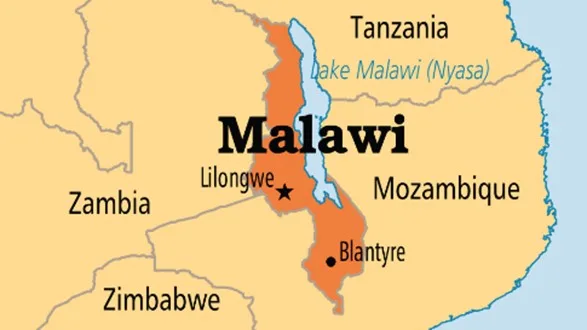UPSC DAILY CURRENT AFFAIRS (19TH OCTOBER, 2024)
Marine Heat Waves
Syllabus: GS3/Environment
Context
- Researchers found that Marine Heat Waves (MHWs) deep in oceans may be significantly under-reported and caused by ocean currents.
- However, they are also being impacted by global warming.
About
- In recent years, global warming has made MHWs more frequent and intense, but as per the new study this phenomenon is witnessed well beyond the surface.
- Extreme temperature changes in the temperature of the twilight zone are also a matter of concern, since many fish species and plankton reside here.
- The twilight zone of oceans is located between 200 and 1,000 metres, still has some visibility.
- Planktons form the base of the oceanic food chain and are a food source for small fish.
What are Marine Heat Waves?
- It occurs when the surface temperature of a particular region of the sea rises to 3 or 4 degree Celsius above the average temperature for at least five days. MHWs can last for weeks, months or even years.
- They can occur in summer or winter – they are defined based on differences with expected temperatures for the location and time of year.
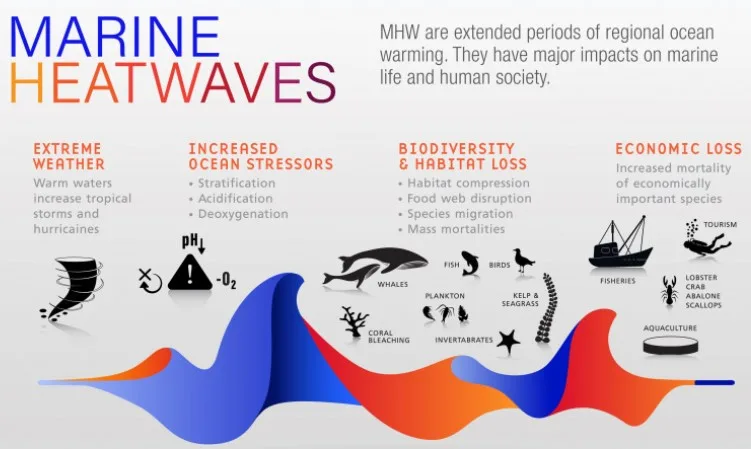
Causes of MHWs
- Climate Change: As atmospheric temperatures rise, ocean temperatures also increase, leading to more frequent and intense heat waves.
- Ocean Currents: Changes in ocean currents influence local temperatures. For example, if warm water is transported to a specific region, it can lead to elevated sea surface temperatures.
- El Niño and La Niña Events: These climate phenomena significantly alter ocean temperatures.
- El Niño typically leads to warmer ocean conditions, which can trigger MHWs, while La Niña can have complex effects, sometimes leading to cooler temperatures in certain regions.
- Local Environmental Changes: Human activities, such as coastal development, pollution, and overfishing, alter local ecosystems and contribute to temperature increases.
Impact of Marine Heat Waves
- Deaths of Several Marine Species: MHWs along the Western Australian coast during the summer of 2010 and 2011 caused some “devastating” fish kills.
- Destruction of kelp forests: Kelps usually grow in cooler waters, providing habitat and food for many marine animals. MHWs change the ecosystem of the coast and lead to their destruction.
- Coral Bleaching: Elevated temperatures stress coral reefs, leading to bleaching and increased mortality rates.
- Species Distribution: Many marine species shift their ranges to cooler waters, affecting local ecosystems and fisheries.
- Impact on Fisheries: Altered species distributions and health affect fish populations, impacting commercial and recreational fishing.
- Economic Consequences: The fishing industry, tourism, and coastal economies suffer due to changes in fish availability and declining health of marine ecosystems.
Way Forward
- Climate Action: Reducing greenhouse gas emissions is crucial.
- Transitioning to renewable energy sources and improving energy efficiency, can help mitigate climate change and its impacts on marine ecosystems.
- Enhanced Monitoring: Investing in ocean monitoring systems can improve our understanding of MHWs.
- Research and Modeling: Supporting research on the causes and consequences of MHWs is vital.
- Community Engagement: Involving local communities in conservation and management efforts can foster stewardship of marine resources.
- Support for Vulnerable Communities: Providing assistance to communities that rely on marine resources for their livelihoods can help them adapt to changing conditions.
- Innovative Solutions: Exploring new technologies and methods, such as aquaculture and seaweed farming, can help mitigate the impacts of MHWs while providing sustainable food sources.
On the Exception to Marital Rape
Syllabus :GS 1/Social Issues
In News
The Supreme Court is hearing petitions to criminalize non-consensual sexual acts in marriage as rape.
- Justice J.B. Pardiwala questioned why wrongful confinement, intimidation, and assault are criminal offenses, but forced sexual intercourse by a husband is not considered rape.
Historical Context:
- Marital Rape Exception (MRE) stems from colonial English law, particularly the “doctrine of coverture,” which stripped married women of legal autonomy.
- The MRE was influenced by historical views, notably from jurist Matthew Hale in the 18th century, asserting that marriage equates to irrevocable consent.
- England abolished the MRE in 1991, but India retained it.
Statistics on Marital Violence:
- Data from the National Family Health Survey-5 (2019-2021) shows that nearly one-third of married women in India have faced physical or sexual violence from their husbands.
- Additionally, global statistics reveal that approximately three-quarters of all sexual assaults transpire within intimate settings, often perpetrated by someone familiar to the survivor.
Current Legal Framework:
- Section 375 of the IPC and Section 63 of the Bharatiya Nyaya Sanhita exclude non-consensual sexual intercourse by a husband from the definition of rape if the wife is over 15 or 18 years old, respectively.
- They provide legal immunity for husbands regarding non-consensual sex with their wives.
- A married woman can seek relief under other laws, like the Protection of Women from Domestic Violence Act, but these are limited.
Issues and Concerns
- Petitioners assert that the current laws violate women’s rights to bodily integrity, autonomy, and dignity.
- The exception is deemed unconstitutional, violating:
- Article 14 (equal protection under the law).
- Article 15(1) (right to non-discrimination).
- Article 21 (right to privacy and bodily integrity).
- The exception is deemed unconstitutional, violating:
- the harm experienced by women from rape, regardless of the perpetrator’s relationship to them, is fundamentally the same.
- It is argued that recognizing a married woman’s right to refuse sex would not undermine marriage; it affirms sexual autonomy.
- It is argued that consent must be an unequivocal and voluntary agreement, applicable to married women as well.
Government’s Stance:
- The Centre argues against striking down the MRE, claiming it could undermine marriage, lead to false allegations, and should be considered a social issue rather than a legal one.
Judicial Observations:
- Chief Justice D.Y. Chandrachud noted the inconsistency in law where certain acts are classified as rape if committed by a stranger but not by a husband.
- The Supreme Court has previously acknowledged that intimate partner violence can constitute rape.
- A 2022 Karnataka High Court ruling allowed for the prosecution of husbands for marital rape.
Future Outlook
- The Court has the authority to evaluate whether the MRE violates fundamental rights and to potentially strike it down if it does.
- The court is considering whether to create a new offense or simply align existing laws with constitutional values.
2024 Global Multidimensional Poverty Index
Syllabus: GS2/ Governance
Context
- The 2024 Global Multidimensional Poverty Index, is published with the theme of Poverty Amid Conflict.
About Global Multidimensional Poverty Index
- MPI is published annually by the UN Development Programme (UNDP) and the Oxford Poverty and Human Development Initiative.
- The index utilizes 10 indicators across these three dimensions.
- If a household is deprived in one-third or more of these indicators, it is considered multidimensionally poor.
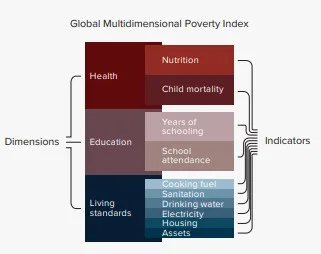
Key Findings
- Across 112 countries and 6.3 billion people, 1.1 billion people (18.3 percent) live in acute multidimensional poverty.
- Poor people live in rural areas: 962 million (83.7 percent) live in rural areas.
- Around 70.7 percent of all poor people live in rural areas of Sub- Saharan Africa (463 million) and South Asia (350 million).
- The five countries with the largest number of people living in poverty are India (234 million), Pakistan (93 million), Ethiopia (86 million), Nigeria (74 million) and the Democratic Republic of the Congo (66 million).
- Together, these five countries account for nearly half (48.1 percent) of the 1.1 billion poor people.
- Approximately 584 million people under 18 are living in extreme poverty, making up 27.9% of all children globally, compared to 13.5% of adults.
- Poverty in conflicted regions: The report noted that 2023 witnessed more conflicts than at any time since World War II causing displacement of over 117 million people.
- Nearly 40% of the 1.1 billion people live in poverty, approximately 455 million, are situated in countries experiencing conflict.
Reasons for India’s poor performance
- Regional Disparities: Rural poverty rates remain high due to inadequate infrastructure, poor service delivery, and limited economic opportunities outside agriculture.
- Poor nutrition: India struggles with severe malnutrition, particularly among children.
- Quality of education: The quality of education in many government-run schools is poor, leading to insufficient learning outcomes.
- Water and sanitation: Poor access to safe drinking water and inadequate sanitation, particularly in rural areas, continues to push many households into multidimensional poverty.
- Economic setbacks: The COVID-19 pandemic severely disrupted India’s economy, leading to job losses, reduced incomes, and increased vulnerabilities for millions of households.
Government Steps for Poverty alleviation
- National Food Security Act (NFSA), 2013: It gives legal entitlement to 67% of the population (75% in rural areas and 50% in urban areas) to receive highly subsidized foodgrains.
- Pradhan Mantri Ujjwala Yojana (PMUY) (2016): This initiative was introduced to provide LPG (liquefied petroleum gas) connections to women belonging to Below Poverty Line (BPL) families.
- Ayushman Bharat scheme: It offers health insurance coverage of up to ₹5 lakh per family per year to shield beneficiaries from the financial burden of expensive medical treatments, thereby preventing them from falling deeper into poverty due to healthcare costs.
- National Nutrition Mission (POSHAN Abhiyaan): Launched in 2018, the mission aims to reduce malnutrition by focusing on stunting, undernutrition, and anemia, especially among children, adolescent girls, pregnant women, and lactating mothers.
- Right to Education Act (RTE): The RTE Act, enacted in 2009, provides free and compulsory education for children between 6 and 14 years.
- Swachh Bharat Mission: The mission aims to achieve universal sanitation coverage by constructing toilets and promoting cleanliness.
Way Ahead
- India has made significant strides in poverty reduction through various initiatives but there is room for further improvement.
- Promoting sustainable livelihoods, improving the quality of service delivery, and leveraging digital solutions for better implementation will ensure that multidimen
- sional poverty continues to decline.
Rising Vulnerabilities of Rural Poor Amid Climate Shocks
Syllabus: GS3/ Climate Change
Context
- A national-level dialogue on FAO’s report “The unjust climate” organized in New Delhi, focused on the multidimensional poverty and climate vulnerabilities in rural parts of the country.
Key Highlights
- Income Disparities: Extreme weather, particularly heat stress, exacerbates income inequality. Poor rural households experience a 5% income loss due to heatwaves and a 4.4% loss from floods, significantly more than wealthier households.
- Gender Impact: If the average temperatures were to increase by just 1°C, women would face a staggering 34 percent greater loss in their total incomes compared to men.
- Extreme temperatures worsen child labour and increase the unpaid workload for women in poor households.
Indian Scenario
- The report has suggested that India has made remarkable strides in reducing rural poverty over the past two decades.
- Headcount poverty rates have dropped dramatically from 42.5 percent in 2005/06 to 8.6 percent in 2022/24.
- Climate change hits India’s rural poor hardest, especially those trapped in multidimensional poverty.
- Structural inequalities and low adaptive capacity worsen the issue.
Adverse effects of climate change
- Climate Refugees: Sea-level rise, floods, and extreme weather displace millions of people, forcing them to migrate.
- This creates challenges for both the displaced populations and the host regions, leading to resource conflicts and socio-political tensions.
- Loss of Livelihoods: In coastal areas and regions dependent on agriculture and fisheries, climate change threatens traditional livelihoods
- Increased Energy Demand: Rising temperatures drive up the demand for energy, particularly for cooling, straining electricity grids and leading to higher energy costs.
- Spread of Diseases: Climate change facilitates the spread of vector-borne diseases as warmer temperatures and altered rainfall patterns expand the habitats of mosquitoes and other disease carriers.
Policy Recommendations
- Anticipatory social protection: Scale up financial support programs that provide assistance before extreme weather events to prevent households from resorting to negative coping strategies.
- Workforce diversification: Invest in skills development, vocational training, and mentorship programs to help rural households diversify their income sources away from climate-sensitive work.
- Gender-transformative approaches: Tackling discriminatory gender norms that prevent women from participating in non-farm employment is crucial.
- Participatory agricultural extension: Encouraging group-based approaches to agricultural experimentation can help rural farmers adapt to changing climate conditions.
- Access to adaptive technologies: Public investment in promoting climate-resilient agricultural technologies is critical for supporting land-constrained households.
Way Ahead
- To effectively curb poverty in India, it is crucial to tackle the climate impacts on rural communities, which are disproportionately affected by extreme weather events.
- Targeted interventions that strengthen the adaptive capacity of rural households and reduce their exposure to climate risks are key to ensuring that poverty reduction gains are sustained.
Non -Kinetic Warfare
Syllabus: GS3/Defence
Context
- Indian armed forces’ preparedness to deal with“hybrid warfare” is one of the 17 subjects that the Parliamentary Standing Committee on Defence has narrowed down for deliberations for the year.
- Hybrid warfare uses both kinetic and non-kinetic warfare methods.
About
- The committee spoke extensively on the growing danger of “non-kinetic warfare” citing the examples of ongoing Russia-Ukraine and Israel-Palestine conflicts, where these methods have been deployed.
- It contended that the future wars will be fought using the tools and ensure that the parliamentary panel closely investigates the Army’s preparedness to face these threats.
Non-Kinetic Warfare
- Non-kinetic warfare generally refers to action against an adversary without a direct conventional military action.
- It comprises possibilities such as information warfare, cyber warfare, psychological operations, electromagnetic offensives and cryptographic warfare.
- With technological progress, many believe that the non-kinetic warfare can turn out to be deadlier than the traditional methods and conflicts may be won by non-kinetic means even before a bullet is fired.
- Kinetic Warfare: Kinetic warfare typically means military means employing a range of weapons.
- While kinetic options are to physically shoot and destroy the drones, non-kinetic options are jamming them or taking control of their operation.
Preparedness for non-kinetic warfare is crucial for several reasons:
- Evolving Threat Landscape: As technology advances, adversaries increasingly use cyber and information warfare tactics. India must adapt to these evolving threats.
- Deterrence: A robust non-kinetic defense can deter potential aggressors by demonstrating the ability to counteract their strategies, thereby reducing the likelihood of conflict.
- Protection of Critical Infrastructure: Non-kinetic attacks often target vital systems, such as power grids and communication networks.
- Preparedness ensures resilience and rapid recovery from potential disruptions.
Standing Committee on Defence
- It is constituted under Rule 331 C of the Rules of Procedure and Conduct of Business in Lok Sabha.
- The Committee was constituted for the first time in 1993.
- It has the Ministry of Defence under its jurisdiction.
- Members: It consists of 31 Members; 21 Members from Lok Sabha, nominated by the Speaker, and 10 from Rajya Sabha nominated by the Chairman.
- The Chairperson of the Committee is appointed by the Speaker.
- The term of office of the Members of the Committee does not exceed one year.
- Functions: To consider the Demands for Grants of the Ministry of Defence, make reports on the same and present them to the Parliament;
- to examine such Bills pertaining to the Ministry of Defence as are referred to the Committee;
- to consider Annual Report of the Ministry of Defence
- to consider National Basic Long-Term Policy Documents presented to the Houses.
FACTS IN NEWS
International Abhidhamma Divas
Syllabus: GS1/ History and Culture
Context
- PM Modi addressed the ceremony in celebration of International Abhidhamma Divas and recognition of Pali as a classical language in New Delhi.
Abhidhamma Divas
- It is celebrated to commemorate the descent of Lord Buddha from the celestial realm of Tāvatiṃsa-devaloka after teaching the Abhidhamma to the deities, including his late mother.
- The Asokan Elephant Pillar, a historical marker at the site, marks this significant event.
Teachings of Abhidhamma
- Abhidhamma adopts a specialized and analytical approach to explore reality.
- It offers a detailed framework for understanding the nature of existence, addressing the processes of birth, death, and mental phenomena in a precise and abstract manner.
- The Abhidhamma categorizes reality into four ultimate realities: Citta (consciousness), Cetasika (mental factors), Rupa (material phenomena) and Nibbana (the unconditioned state, or ultimate liberation).
Classical Status to Pali language
- The ancient language served as the vehicle for delivering Lord Buddha’s teachings around 500 B.C.
- The Tipitaka, or “Threefold Basket,” which includes the Vinaya Pitaka (monastic discipline), Sutta Pitaka (Buddha’s discourses), and Abhidhamma Pitaka (philosophical analysis), is entirely written in Pali.
- These texts are the foundation of Theravāda Buddhist philosophy and practice.
- Pali literature encompasses the Jataka Kathas, which recount the stories of the Buddha’s previous lives.
Azores Islands
Syllabus: GS1/Geography
Context
- The regional assembly of Portugal’s Azores Islands approved the creation of the largest protected marine area in the North Atlantic to reach international conservation goals.
About
- It aims to achieve the goals set by the United Nations of protecting 30% of the Earth’s land and sea by 2030 under a global pact adopted last year.
- The network ensures the preservation of underwater mountain ranges and vulnerable marine ecosystems, including deep-sea corals, hydrothermal vents and marine species.
Azores Islands
- The nine-island archipelago is an autonomous region roughly 1,500 km (932 miles) west of mainland Portugal lies in the North Atlantic Ocean and home to unique marine biodiversity.
- The Azores are divided into three widely separated island groups: the eastern group, the central group, and the northwestern group.
- Their unstable geologic nature is indicated by numerous earthquakes and volcanic eruptions.
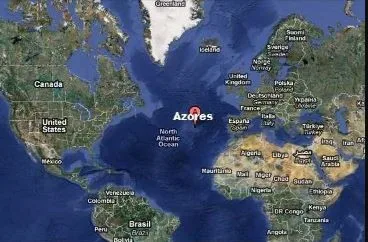
US’s Click-to-Cancel Rule
Syllabus :GS 2/IR
In News
The United States’ Federal Trade Commission has finalized a rule requiring sellers to make cancellation as easy as signing up for services.
- Most provisions will take effect 180 days after publication in the Federal Register.
About Rule
- The rule is part of the FTC’s modernization of its 1973 Negative Option Rule to address deceptive practices in a digital economy.
- The rule will apply to almost all negative option programs across any media.
- The FTC defines “negative option” programmes as “companies assuming a customer accepted a service unless they specifically rejected it”.
- This would include something like a consumer agreeing to a one-week trial, and not cancelling it before being billed for regular membership.
Key Guidelines :
- Sellers cannot misrepresent material facts in negative option marketing.
- Sellers must disclose important information before obtaining consumers’ billing information.
- Sellers must obtain informed consent from consumers before charging them for negative option features.
- Sellers must provide a straightforward mechanism for consumers to cancel and stop charges immediately.
| Do you know ? – The final rule dropped the requirement for annual reminders about negative option features.Sellers can inform consumers about plan modifications when they seek cancellation, but must first ask if they want to hear about it. |
Objectives
- The rule aims to eliminate complicated cancellation processes, saving consumers time and money.
New statue of “Lady Justice”
Syllabus :GS 2/Governance
In News
- The Supreme Court of India has introduced a new statue of “Lady Justice” in its judges’ library to reflect a modern interpretation of justice.
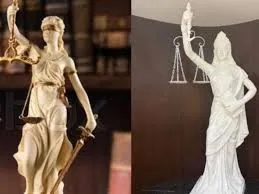
About statue of “Lady Justice”
- The statue of “Lady Justice” was designed by Vinod Goswami, a muralist and educator from Delhi.
- The statue depicts a saree-clad woman without a blindfold.
- She holds scales in one hand and a copy of the Constitution of India in the other, replacing the traditional sword.
- Symbolism: The absence of a blindfold signifies that “Law is not blind; it sees everyone equally,” according to Chief Justice D Y Chandrachud.
- This new representation aims to convey the importance of impartiality and equality in justice.
- The statue reflects ongoing legal reforms and the goal of “decolonising” India’s legal framework.
| Do you know ? – The imagery of Lady Justice originates from Greek and Roman mythology, notably represented by Themis and Justitia, who were not traditionally depicted blindfolded. – The blindfolded image became popularized in the 15th century, originally as a critique of justice. – The British Raj introduced the iconography of Lady Justice in India, which continues to be used in courthouses. 1. Historical depictions of Lady Justice can be found in major Indian high courts, sometimes with and sometimes without a blindfold. |
India’s Foreign Exchange Reserves
Syllabus: GS3/Economy
Context
- In one of the largest decreases in India’s forex reserves in recent times, the country’s foreign exchange kitty dropped $10.746 billion to $690.43 billion.
- At the end of September, the reserves had hit an all-time high of $704.885 billion.
About
- Foreign exchange reserves are assets that are denominated in a foreign currency held by a central bank.
- These reserves are used to back liabilities and influence monetary policy.
- These include foreign currencies, bonds, Gold reserves, treasury bills, and other government securities.
Purpose of Foreign Exchange Reserves:
- Stabilizing the currency: Central banks use reserves to manage exchange rates and maintain currency stability.
- Facilitating international trade: Reserves allow a country to pay for imports and settle international debts.
- Building confidence: High levels of reserves enhance investor confidence in a country’s economy.
- Crisis management: Reserves provide a buffer against economic shocks or sudden capital outflows.
Smart Insulin for Diabetes
Syllabus :GS 3/Science and Tech
In News :
Scientists have developed a “smart” insulin, named NNC2215, that responds in real-time to blood sugar changes.
About NNC2215:
- It features an “on-and-off switch” within the insulin molecule itself.
- It contains a ring structure and a glucoside that keeps insulin inactive when blood sugar is low.
- When glucose levels rise, glucose replaces the glucoside, activating the insulin.
- Effectiveness: NNC2215 has shown to be as effective as human insulin in lowering blood glucose in animal trials (rats and pigs).
Diabetes
- Diabetes is a chronic disease that occurs either when the pancreas does not produce enough insulin or when the body cannot effectively use the insulin it produces. Insulin is a hormone that regulates blood glucose.
- It affects over half a billion people worldwide, causing nearly seven million deaths annually.
- Types of Diabetes: Type 1 Diabetes characterized by the pancreas not producing enough insulin, often starting in childhood.
- Type 2 Diabetes involves cells becoming resistant to insulin, requiring higher production from the pancreas.
- Current Treatment: Patients use synthetic insulin, which requires constant monitoring to prevent dangerous fluctuations in blood sugar levels.
- Future Outlook : Human trials are planned to further assess the safety and efficacy of the new insulin.
Locust Infestation
Syllabus: GS3/Agriculture
Context
- Plantations of farmers are severely affected by the spotted locust infestation in Kerala.
About
- Locusts are the short-horned grasshoppers with highly migratory habit.
- Locusts can change from a solitary phase to a gregarious phase, where they form dense swarms that can travel hundreds of kilometers in search of food.
- Only four species viz. Desert locust (Schistocerca gregaria), Migratory locust (Locusta migratoria), Bombay Locust ( Nomadacris succincta) and Tree locust (Anacridium sp.) are found in India.
- The desert locust is the most important pest species in India as well as in intercontinental context.
- Concern: They cause great devastation to natural and cultivated vegetation leading to national emergency of food and fodder.
African Baobab (Adansonia digitata)
Syllabus: GS3/ Environment
Context
- A new research by South African ecologists has refuted the claim that the African Baobab tree is dying due to climate change.
African Baobab
- Characteristics: Baobabs grow to a height of 5–25 meters and have a trunk diameter of up to 14 meters.
- Their trunks are wide and bottle-shaped, storing water for survival in arid environments.
- Baobabs are deciduous, losing their leaves in the dry season, and remaining leafless for about eight months of the year.
- Distribution: They are typically found in dry, hot savannas of sub-Saharan Africa. It can live for over a thousand years.
- Fruits: Baobabs produce hard-shelled, oval fruits called which are rich in vitamin C and other nutrients.
- Cultural Significance: In African folklore, the Baobab is often seen as a sacred tree, and it holds a place of reverence in many local traditions and myths.
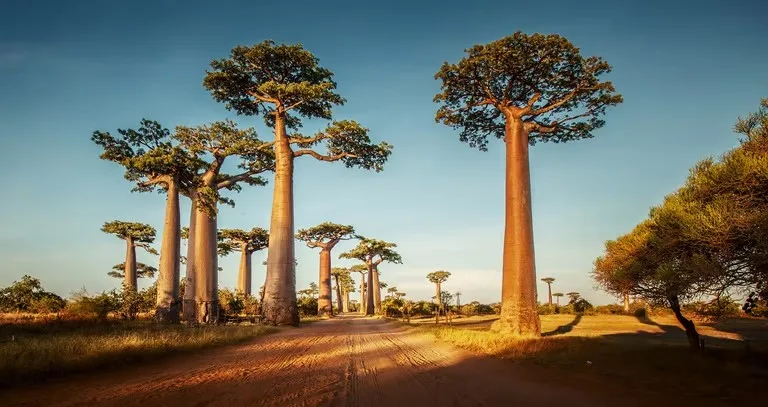
Musaned Platform
Syllabus: Miscellaneous
Context
- Saudi Arabia launched the Musaned Platform to ensure wage protection and human rights of expat workers.
About
- It is a comprehensive electronic platform to facilitate the recruitment process of domestic workers, enhance the protection of rights for all parties involved, and inform employers and domestic workers of their rights and responsibilities.
- The platform will benefit workers from 10 African countries, including Sudan and Ethiopia, and nine Asian countries such as India and Bangladesh, the platform enhances transparency and accountability.
Key Features
- Foreign workers in the domestic (household) work sector can check the existing employment contracts and follow updates in a dedicated Musaned labor app.
- It also allows foreign embassies to have “view access” on the system on all the details related to their citizens working in Saudi.
- The Musaned platform can be linked with contract insurance and health benefits.
Malawi
Syllabus: GS 1/Places in news and GS 2/IR
Context
- In the final leg of her three nation visit, President Droupadi Murmu reached Malawi marking the first-ever visit by a President of India to Malawi.
About: Malawi
- It is a landlocked south-east African country bordered by Zambia to the west, Tanzania to the north and northeast, and Mozambique to the east, south and southwest.
- Lake Malawi (also called Lake Nyasa), the third largest and second deepest lake in Africa, and the ninth largest in the world, was declared a UNESCO World Heritage Site in 1984. It accounts for more than one-fifth of the country’s total area.
- The East African Rift Valley runs through the country from north to south. The capital, and largest city is Lilongwe.
- The name Malawi comes from the Maravi, an old name for the Chewa people who inhabit the area. The country is nicknamed “The Warm Heart of Africa” because of the friendliness of its people.
- Political independence: The country achieved full independence, as Malawi, in 1964 from the British.
- Economy: The country’s economy is agro based with agriculture contributing 37% of the national GDP and employing 80% of the total workforce.
